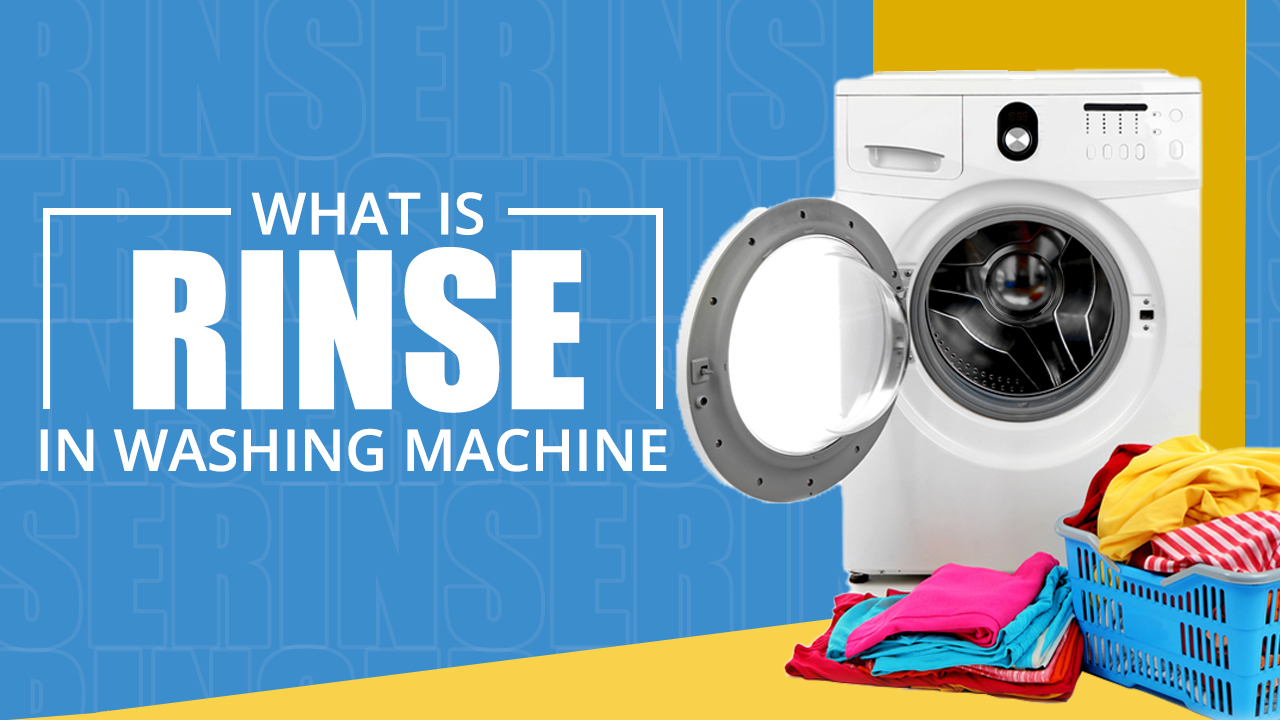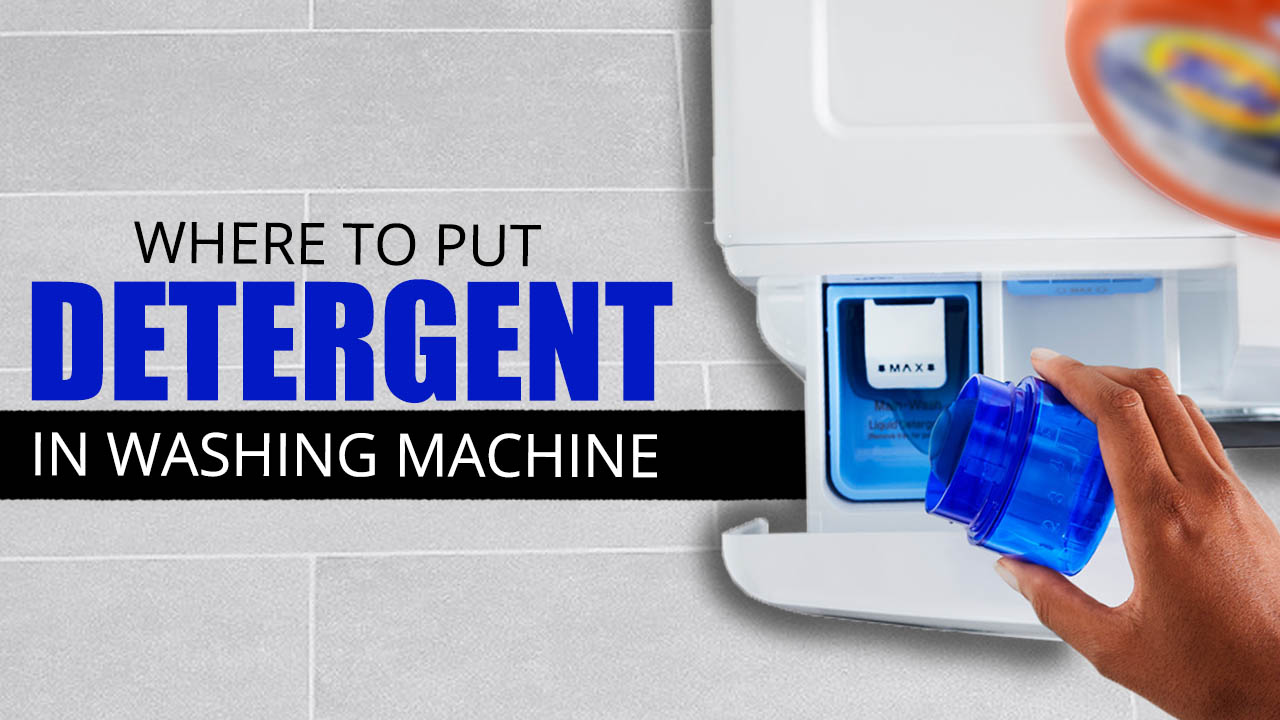Washing machines have come a long way since the early days of laundry, and today’s machines are packed with features and options. If you’re wondering how to use a washing machine, the process is actually quite simple.
Most machines have a control panel with different settings for different types of fabric, water temperature, and spin cycle. To start a load of laundry, simply select the appropriate settings and load the clothes into the machine.
Once the cycle is complete, your clothes will be clean and ready to wear. Washing machines have made doing laundry much easier, and with a little practice, you’ll be an expert in no time.
Why Is It Important to Know How to Use a Washing Machine?
Washing machines are a necessary appliance in most homes, and knowing how to use one properly can save you time and energy. Additionally, understanding how your washing machine works can help you troubleshoot any issues that may arise. Finally, properly caring for your washing machine will extend its lifespan.
If you have a large family or do a lot of laundry, you likely wash clothes several times a week. Washing your clothes by hand can be time-consuming and labor-intensive. A washing machine can make your laundry routine much easier and faster.
In addition to saving you time, using a washing machine can also save you money. If you wash your clothes by hand, you use more water and energy than you would if you used a machine. Additionally, washing your clothes in a machine can help them last longer because it is less likely to cause wear and tear.
Knowing how to properly use a washing machine is also important for safety reasons. Improper use of a washing machine can lead to accidents or injuries. Additionally, if you do not use your washing machine properly, you could damage your clothes or the machine itself.
Caring for your washing machine is also important. Regularly cleaning your machine can help prevent buildup of dirt and grime. Additionally, properly storing your washing machine can help protect it from damage.
Overall, there are many reasons why it is important to know how to use a washing machine. Washing machines can save you time and money, and understanding how they work can help you troubleshoot any problems that may arise. Additionally, properly caring for your washing machine will extend its lifespan.
How to use a semi-automatic washing machine
- Step 1: Before starting the machine, check all connections to ensure they are secure. This includes both the water supply hose and the power supply to the washing machine.
- Step 2: Fill the machine with the appropriate amount of water. Check the manual for your machine to see how much is required. In general, filling the drum to two-thirds of its capacity is a good idea.
- Step 3: Fill the drum with laundry detergent. You can use any laundry detergent, but we recommend Surf Excel Matic Liquid because it is designed specifically for washing machines. It dissolves quickly in water and leaves no residue behind.
- Step 4: Set your machine’s timer based on the type of load you’re washing. A shorter cycle is sufficient for lightly soiled clothes. If your clothes are extremely dirty, set the timer for a longer cycle.
- Step 5: Start the machine and let it complete the cycle. When the cycle is finished, your clothes will be clean and ready to hang to dry.
- Step 6: Drain the washing machine and remove all of the clothes. To remove any detergent residue, wipe the inside of the drum with a clean towel.
How to use a top load washing machine
- Step 1: Select your detergent. Choose a detergent that is gentle on your clothes while also removing tough stains. Surf Excel Matic Liquid Top Load is an excellent option because it is designed specifically for top-loading washing machines. It leaves no residue behind and completely dissolves in water.
- Step 2: Fill the empty drum with detergent. Before adding any clothes, make sure to add the detergent to the empty drum. This will aid in the proper dissolution of the detergent in the water.
- Step 3: Calculate your load. Place your clothes gently on top of the detergent. Overcrowding the machine will result in an imperfect wash.
- Step 4: Choose a wash cycle. Consult the clothing care instructions on your garments to determine what temperature water to use and which wash cycle to use. If in doubt, always use cold water.
- Step 5: Empty the washing machine. Take your clothes out as soon as the cycle is finished. Mold and mildew can form on your clothes if you leave wet laundry in the washing machine for an extended period of time.
How to use a front load washing machine
- Step 1: Select your detergent. The first step is to select the appropriate laundry detergent. You should use a detergent that is specifically designed for front-loading washing machines. Surf Excel Matic Liquid Front Load is our recommendation. It is specially formulated for front load washing machines and aids in the longevity of your washing machine. As a liquid, it dissolves completely in water and leaves no residue (unlike powders).
- Step 2: Prepare your laundry. Open the washing machine door and place your dirty laundry in the drum. Make sure your clothes have enough room to move around during the wash cycle. Check to see if your palm can fit on top of the pile after you’ve added all of your clothes. If it can, the load is adequate. Reduce the load if it cannot. The remaining clothes can be washed in the next cycle.
- Step 3: Pour in the fabric conditioner. In the dispenser box, there is a fabric conditioner tray next to the detergent tray. Comfort Core fabric conditioner can be used. It will give your clothes a light fragrance while also making them feel smooth, soft, and comfortable to wear.
- Step 4: Determine the temperature. Read the wash care label instructions on your garments and choose the appropriate washing temperature. If your load has multiple temperature recommendations, choose the lowest one.
- Step 5: Select the appropriate spin cycle. Again, consult the care label on your clothing for information on the spin cycle. Delicate fabrics, in general, require a slower cycle, whereas regular cotton garments can be washed on a faster cycle.
- Step 6: Close the door and press the start button. As soon as the cycle is finished, unload the clothes. After the wash cycle is finished, you should not leave the laundry in the machine for more than 2 hours. This will aid in the prevention of mould and mildew growth.
The importance of different washing machine settings
The different washing machine settings are important for getting your clothes clean. The settings determine the amount of time the clothes are washed, the amount of water used, and the type of detergent used. If you have a lot of dirt on your clothes, you may want to use the heavy cycle. This cycle uses more water and detergent to clean the clothes. The normal cycle is for average dirtiness. The delicate cycle is for lightly soiled clothing. This cycle uses less water and detergent.
The different washing machine settings are important because they can save you time and money. If you use the heavy cycle when you only have a little bit of dirt on your clothes, you are wasting water and detergent. You could use the normal cycle and save money. If you have a lot of dirt on your clothes, you need to use the heavy cycle to get them clean.
You should also pay attention to the water temperature setting. The hotter the water, the cleaner your clothes will be. However, hot water can damage some fabrics. You should read the care labels on your clothes before you wash them to see if they can be washed in hot water. If not, you should use the warm or cold setting.
Some washing machines have a pre-wash cycle. This cycle uses less water and detergent. It is good for lightly soiled clothing. You can save time and water by using the pre-wash cycle.
Some washing machines have a sanitize cycle. This cycle uses hot water and extra detergent to kill bacteria. It is good for heavily soiled clothing or if you are allergic to certain types of detergent.
You should always follow the manufacturer’s instructions when you use your washing machine. This will help you get the best results and prevent damage to your clothing.
Do’s and don’ts of using your washing machine
When it comes to doing our laundry, most of us know the basics – we put clothes in a machine, choose a cycle, and press start. But there are actually many different ways to use your washing machine depending on the type of fabric you’re cleaning and the level of dirt and grime you need to remove. So whether you’re new to doing your own laundry or just looking for some tips on how to get your clothes extra clean, read on for some advice on how to make the most out of your washing machine.
Do
1. Separate your clothes into light and dark colours
When doing laundry, the most typical mistake is to put all the garments in one laundry basket. The first rule is to keep white clothes separate from coloured ones.
To load the best top load washing machine in India correctly, you must first divide the whites from the coloured ones. White garments can be washed at a temperature of 60 ° C by carrying out a single wash. If the laundry is heavily soiled, it is better to increase the water temperature up to 90 ° C. You can also use the pre-wash. This will certainly lead to a greater consumption of water, detergent and electricity but avoid rewashing the garments.
For coloured fabrics, particular attention must be paid to the labels on the garments that are going to be washed, as some cannot be put in the washing machine but must necessarily be washed by hand. Generally, in any case, for coloured garments the temperatures must not exceed 40 degrees. The choice of the program is fundamental.
2. Read the clothing label for washing instructions
Each clothing, and in general, a fabric, has an inside label with a set of symbols that connect to a meaning that informs how to clean and wash the garment properly.
A container symbol can be found on some labels. In this situation, it may be accompanied by a hand sign, indicating that the clothing must be hand-washed. Alternatively, the degrees might be found in the form of a number. This indicates the appropriate temperature for treating the garment.
Also, be careful not to mix different types of fabrics in the same load, as they could come out damaged. In general, it is best to separate light and dark clothes. But within these two groups, you can also make different loads depending on the fabric. Cotton clothes, for example, should not be washed with delicate fabrics such as silk.
3. Load the washer evenly, making sure to follow the manufacturer’s directions
To load the best semi automatic washing machine correctly, never exceed the maximum load weight established by the manufacturer. If you browse the instruction booklet, you will see that each program has a maximum weight of cloths and detergent. This data is of fundamental importance to wash the clothes perfectly, not to wrinkle them too much and avoid tiring, or even worse, breaking your washing machine.
Therefore, it is advisable to always have the manufacturer’s sheet with the weight indications at hand. Alternatively, you can rewrite it on a sticky sheet or a magnet. In this way you will always have this fundamental information at hand. Also, don’t confuse the capacity of the basket with the maximum weight. The capacity of the washing machine is usually much higher than the recommended weight.
If you have a large amount of clothes to wash, it is better to divide them into two or more loads, rather than exceed the maximum weight. In addition to taking care of your washing machine, this will also give you better results. The clothes will come out cleaner and without so many wrinkles.
4. Load the washer from heaviest items to lightest
When loading the washing machine, it is important to distribute the clothes evenly throughout the basket. If they are all placed in one area, they will not be properly washed. In addition, it is advisable to put the heaviest clothes at the bottom and the lightest at the top.
This will ensure that all the clothes are properly washed. Additionally, it is important to make sure that there are no items blocking the agitator or preventing water from flowing freely through the basket.
5. Place clothes in the washer, making sure the pockets are empty and zippers & buttons are closed
Before you toss your clothes in the best front load washing machine in India, there are a few things you should do to ensure they come out clean and looking great. First, check the pockets to make sure they are empty. This includes not only your pants pockets, but also the pockets of jackets and shirts. It’s easy to forget about items in your pockets, and you don’t want them ending up ruined in the wash.
Second, make sure all zippers and buttons are closed. This will prevent them from getting caught on other items of clothing and getting damaged. Finally, give your clothes a quick once-over to look for any stains or areas of dirt that need to be pre-treated. By taking a few moments to prepare your laundry before washing it, you can help ensure that it comes out looking its best.
6. Add detergent to the washer according to the instructions on the bottle
One of the most important steps in doing laundry is adding detergent to the washer. This may seem like a simple task, but there are a few things to keep in mind to get the best results. First, always check the manufacturer’s instructions on the detergent bottle. Different brands and types of detergent may have different recommendations for how much to use.
Second, be sure to add the detergent before you have already added the clothes to the washer. This will help to ensure that the detergent is evenly distributed and doesn’t cause any damage to your clothes.
Finally, don’t overdo it – using too much detergent can make your clothes dirtier. So, follow the instructions on the bottle, and you’ll be sure to get your clothes clean and fresh with no problems.
7. Select the right water level, wash cycle, and temperature for your load of laundry
When it comes to laundry, there are a few key factors that will determine how effective your wash cycle is. The first is water level. If you have a small load of laundry, it’s important to select the right water level so that your clothes have enough room to move around and get clean. The second factor is wash cycle.
Different fabrics require different types of care, so it’s important to select the right cycle for your load. For example, delicate items should be washed on a gentle cycle, while heavily soiled items may need a longer cycle.
Finally, temperature is also an important consideration. Hot water can help to remove stubborn stains, but it can also damage delicate fabrics. As a result, it’s important to select the appropriate temperature for your load.
Don’t
1. Don’t put anything in the washing machine that is not meant to go there
As anyone who has ever dealt with a clogged washing machine knows, it is important to only put items in the machine that are meant to go there. Coins, keys, and other small items can easily fall through the holes in the washing basket and become lodged in the pump or drain line. Not only is this a nuisance, but it can also cause serious damage to the machine. In some cases, small items can even cause the pump to fail, resulting in an expensive repair bill. Therefore, it is always best to err on the side of caution and avoid putting anything in the washing machine that could potentially cause problems.
2. Don’t use your washing machine without the lint trap in place
As anyone who has done a load of laundry knows, lint can be a problem. It can build up on clothing, making it difficult to remove. Even worse, lint can clog your washing machine, causing it to work less efficiently and potentially leading to costly repairs. One way to help prevent lint buildup is to always use the lint trap that came with your machine. This simple step will help to catch lint before it has a chance to cause problems. In addition, be sure to clean out the lint trap after each use. A little bit of regular maintenance can go a long way towards keeping your washing machine in top condition.
3. Don’t use your washing machine if it is not in good working condition
It is important to make sure your washing machine is in good working condition before using it. This is because using a machine that is not in good condition can cause problems, such as clothes not getting clean or coming out wet. If you have any doubts about how to properly use your washing machine, you should consult a professional. Taking these precautions will help ensure that your clothes are clean and dry after being washed.
4. Don’t forget to read the instruction manual that came with your washing machine
Most of us have probably been guilty of ignoring the instruction manual that came with our washing machine. After all, it’s just a machine, right? We can figure out how to use it without reading the fine print. However, taking the time to read the manual can actually save you a lot of time and money in the long run. The manual contains important information about how to use the machine properly, how to troubleshoot common problems, and how to keep it in good condition. By taking the time to read the manual, you can avoid costly mistakes and keep your washing machine running smoothly for years to come.
Conclusion
As you can see, using a washing machine is pretty simple. Just remember to follow the manufacturer’s instructions and always use the correct detergent for your fabric type. Oh, and one last tip – be sure to always empty the lint trap before each load! By following these simple tips, you’ll be able to keep your clothes looking their best for years to come. Thanks for reading!
Frequently asked questions
1. How full should a washing machine be?
A washing machine should be filled to about two-thirds of its capacity for most loads. However, for very large or bulky items, it may be best to fill the machine only half-way. It is also important to check the washer’s manual for specific guidelines on load size and capacity.
2. Do you put laundry detergent in first?
You can put laundry detergent in first, but it’s not necessary. You can also add it directly to your clothes or pour it into the washing machine dispenser. It all depends on your preference and what you think works best. If you’re not sure, just experiment and see what works best for you.
3. What happens if you put too many clothes in the washer?
If you put too many clothes in the washer, they will not get clean because there is not enough room for the water to circulate properly. Additionally, the clothes may come out wrinkled and damaged from being crammed into the machine. It is best to follow the manufacturer’s recommendations on how many clothes to put in the washer at one time.
4. Is it better to do small loads of laundry?
The answer to this question depends on a few factors. If you have a small load of laundry, and your washing machine can handle small loads, then it is probably better to do several small loads rather than one large load. This way, your clothes will get cleaner and will dry more evenly. However, if you have a large load of laundry, it may be more efficient to do one large load rather than several small loads. Ultimately, it is up to you to decide what is best for your laundry needs.






